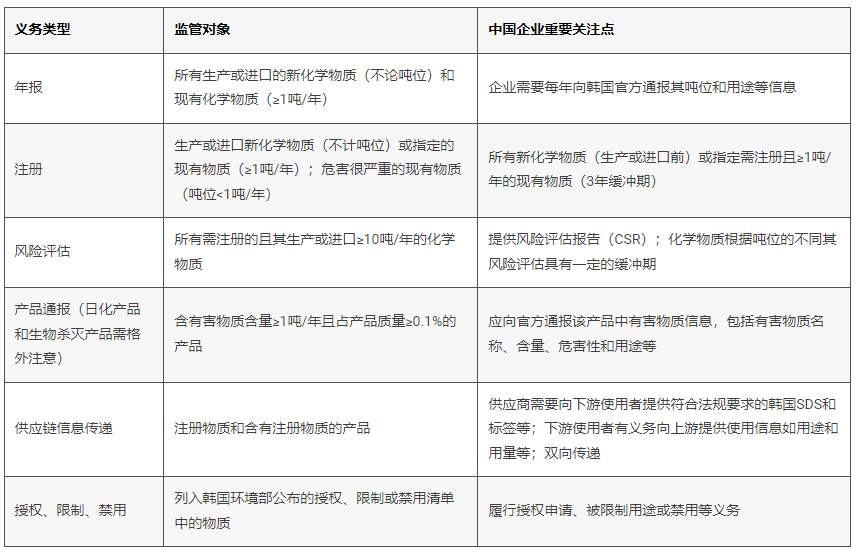How do flavor and fragrance companies respond to the new Korean K-REACH regulations?
K-REACH (Korean Chemical Registration and Evaluation Act, English name is Act on Registration, Evaluation, etc. of Chemicals), also known as the Korean REACH or chemical evaluation law, including registration, evaluation, authorization, restrictions and other aspects of the content.
Implementation and impact of K-REACH regulations
K-REACH (Korean Chemical Registration and Evaluation Act, English name is Act on Registration, Evaluation, etc. of Chemicals), also known as Korean REACH or Chemical evaluation Act, Regulations include registration, evaluation, authorization, restriction and so on. K-REACH was officially implemented on January 1, 2015, replacing the Toxic Chemicals Control Act (TCCA) for new chemicals that had been in place since 1991. The K-REACH law expands the scope of regulation of chemical substances on the Korean market to include existing chemicals produced or imported, new chemicals and chemicals in articles. These chemicals are involved in almost all chemical industries and downstream products, such as electronic products, detergents, textiles, resins, rubber and plastics, dye coatings and flavors that China currently exports to South Korea in large quantities. As one of South Korea's trading partners, China's annual exports of flavors and fragrances occupy a certain share, and the new K-REACH regulations will certainly have a significant impact on China's flavor and fragrance industry and related industry trade.
Main obligations of K-REACH regulation
For the protection of commercial secrets, Chinese flavor and fragrance manufacturers can entrust a qualified OR (Only Representative, the concept is the same as under EU-REACH) to register before exporting to South Korea. The main obligations that manufacturers are required to entrust OR perform under K-REACH are shown in Table 1.
Table 1: K-REACH Main obligations

Description:
Existing substances are substances that are listed on the Korea Existing Chemical Substances List (KECI) by the Ministry of Environment of Korea and can be checked for free through the NCIS online system.
A new substance is a chemical in addition to an existing chemical.
Existing substances for priority registration are those chemicals that the Ministry of Environment considers necessary for registration and risk assessment after deliberation by the Korea Chemical Substances Assessment Committee.
Which fragrance-related substances need to fulfill the registration and annual report obligations
Under Korea's K-REACH regulations, all new chemical substances exported to Korea (regardless of tonnage) or designated existing chemical substances exported in excess of 1 ton/year must be registered and reported.
October 31, 2014, the Ministry of Environment of South Korea announced the first batch of designated priority registration of existing substances list (PEC draft) K-REACH, a total of 518 substances, the official list will be announced in June 2015, according to MOE reliable information revealed that the official list will not have major changes. For the flavor and fragrance industry and its upstream industry, combined with the first batch of PEC list, Zhongbon Consulting has helped manufacturers screen out the key substances related to the flavor and fragrance industry as shown in the following table.

At the same time, China advisory reminds the majority of flavor and fragrance manufacturers because flavor and fragrance are especially special and innovative, if the substance exported to South Korea is determined to be a new substance, regardless of whether the export exceeds 1t/a, it must be legally exported after completion of registration. So how can manufacturers determine for themselves whether a product is a new substance in Korea? Here, o little skill, share a query query through the NCIS free online web site (http://ncis.nier.go.kr/ncis/Index), if the material of the number of the corresponding KE, the new material can be regarded as basic. For example, terpene blends (CAS 1335-76-8) and terpene hydrocarbons (CAS 63394-00-3) are new substances under K-REACH and are therefore subject to registration and reporting obligations prior to export. Substances such as terpentine (CAS 8002-09-3) and turpentine (CAS 8006-64-2) are existing substances under K-REACH and are not included in the first batch of PEC list, so there is no need to fulfill the registration obligation, and only need to fulfill the annual report obligation according to the export volume.





 Consultation
Consultation
 400-115-9001
400-115-9001